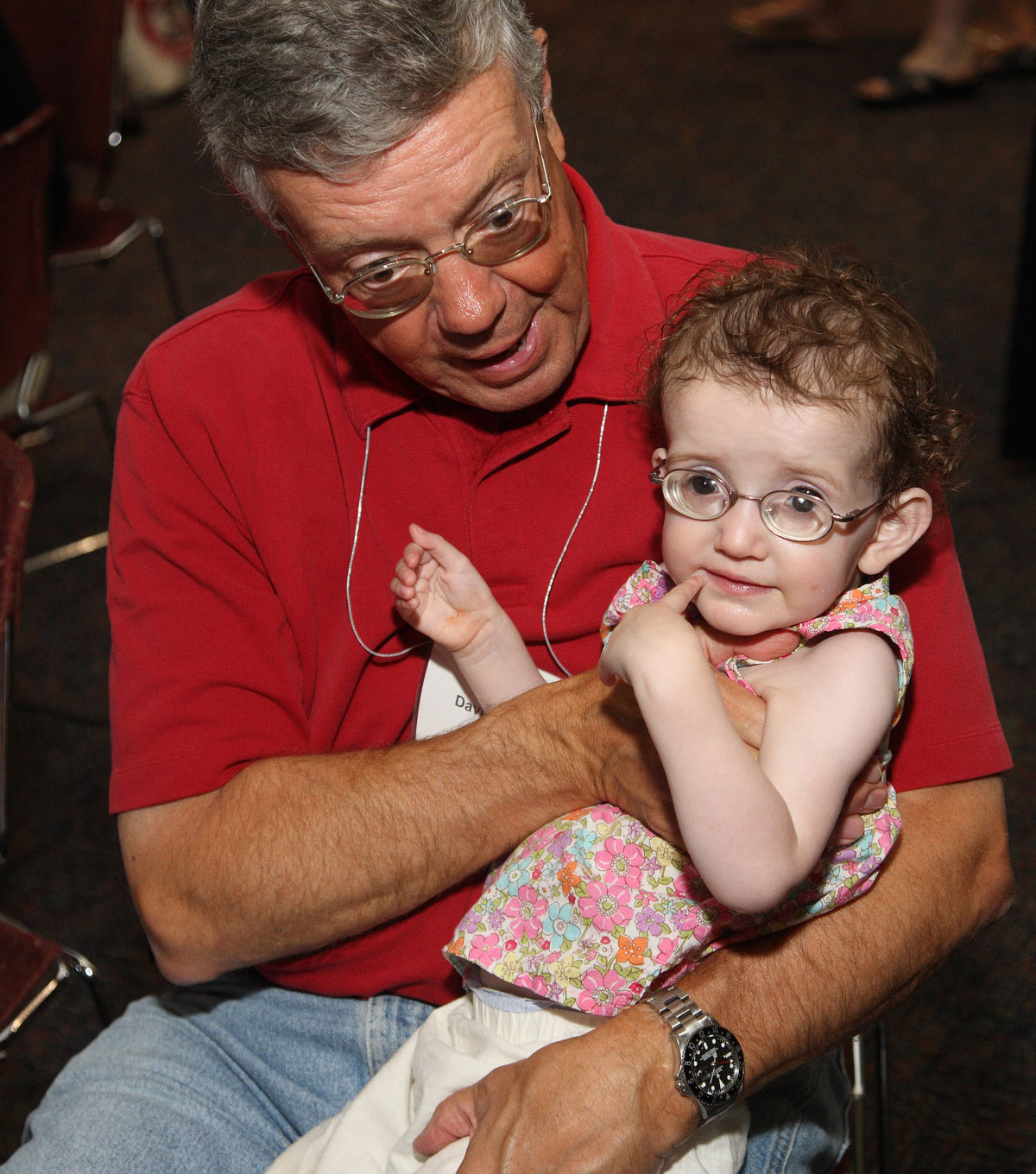About 1 in 5,000 people have Marfan syndrome, including men and women of all races and ethnic groups. About 3 out of 4 people with Marfan syndrome inherit it, meaning they get the genetic mutation from a parent who has it. But some people with Marfan syndrome are the first in their family to have it; when this happens it is called a spontaneous mutation. There is a 50 percent chance that a person with Marfan syndrome will pass along the genetic mutation each time they have a child.
Because connective tissue is found throughout the body, Marfan syndrome can affect many different parts of the body as well. Features of the disorder are most often found in the heart, blood vessels, bones, joints, and eyes. Some Marfan features – for example, aortic enlargement (expansion of the main blood vessel that carries blood away from the heart to the rest of the body) – can be life-threatening. The lungs, skin, and nervous system may also be affected. Marfan syndrome does not affect intelligence.
What are the Key Features of Marfan Syndrome?
Marfan syndrome and related conditions affect the body’s connective tissue. Connective tissue holds the body together and plays a role in its growth and development. Because connective tissue is found throughout the body, Marfan syndrome and related disorders can affect many parts of the body, including the heart and blood vessels, bones and joints, eyes, skin, and lungs.
You can get more detailed information about the effects on each system by clicking on the links provided.
-
Cardiovascular
Problems with the heart and blood vessels are common – and can be very serious – in people with Marfan syndrome and many related conditions. That’s why an early and accurate diagnosis is vital.
The most common of these problems affects the aorta, the main blood vessel carrying blood from the heart to the rest of the body. Heart valves can also have problems. Less often, people have problems in blood vessels other than the aorta.
Even though heart and blood vessel problems affect about 9 out of every 10 people diagnosed with Marfan syndrome, there is good news. If you get diagnosed, you have a lot of options, including having surgery, taking medications and changing your physical activities. With treatment, you have a good chance of avoiding a life-threatening situation.
Types of cardiovascular problems
Aortic enlargement
In a person with Marfan syndrome or some related disorders, the aorta may become enlarged (aortic dilation) or the walls of the aorta may bulge (aortic aneurysm). These are very serious problems because a significantly enlarged aorta is at risk for tearing or rupture (aortic dissection). For most people with Marfan syndrome, the problem starts in the segment of the aorta closest to the heart.Aortic tear or rupture
A tear or rupture between layers of the aortic wall is called an aortic dissection. When this happens, people experience severe pain in the center of their chest, stomach, or back. They may describe the pain as “sharp,” “tearing” or “ripping.” The location of the pain may change. Sometimes, the pain is less severe, but people still have the feeling that “something is very wrong.” If a dissection is suspected, a person needs immediate medical attention and should go to a hospital emergency department right away.
There are two types of aortic dissection:
- Dissection of the ascending aorta. This is the most common dissection in Marfan syndrome and it’s life-threatening. When it happens, a person needs immediate surgery.
- Dissection of the descending aorta: This can often be managed with medication and monitoring. A person only needs surgery if they have serious complications, such as loss of blood flow to vital organs or an aorta that is seriously enlarged.
Mitral valve prolapse
Mitral valve prolapsed is a condition in which the flaps of one of the heart’s valves (the mitral valve, which regulates blood flow on the left side of the heart) are “floppy” and don’t close tightly. Symptoms can include irregular or rapid heartbeats and shortness of breath. Some people also have leaking of the mitral valve. A small amount of leaking is usually not a problem, but a person may need surgery if the mitral valve leaks a lot.
Aortic regurgitation
Aortic regurgitation is when the aortic valve does not fully close and blood leaks back into the heart. This often happens when the aorta is enlarged and the valves cannot fully come together. The only symptoms a person may have are forceful heartbeats and shortness of breath during light activity.
Click below to download:
Heart and Blood Vessels in Marfan Syndrome
-
Eyes and Head
- Dislocated Lenses
- Nearsightedness (Myopia)
- Abnormal downward slant in the eyes
- Long, narrow skull
- Narrow jaw
- Crowded teeth
- High arched palate
-
Skin
- Stretch marks on the skin (striae atrophicae) may occur in anyone, particularly as a result of rapid growth during adolescence, pregnancy or marked weight gain or loss. People with Marfan syndrome are prone to develop stretch marks, often at an early age and without weight change. The marks tend to appear in body parts subject to stress, such as the shoulders, hips, and lower back. Although some people don’t like the way the stretch marks look, they do not pose any health risk and do not require treatment.
-
Bones
- Long arms and legs
- Tall and thin body type
- Long, thin fingers
- Curvature of the spine (scoliosis or kyphosis)
- Chest sinks or sticks out
- Flexible joints
- Flat feet
- High-arched palate
- Teeth that are too crowded
-
Lungs
- Sudden lung collapse
- Emphysema
- Asthma
- Sleep apnea
-
Other
- Low Muscle Tone

What Causes Marfan Syndrome?
Connective tissue is made up of proteins. The protein that plays a role in Marfan syndrome is called fibrillin-1.
Marfan syndrome is caused by a defect (or mutation) in the gene that tells the body how to make fibrillin-1. This mutation results in an increase in a protein called transforming growth factor beta, or TGF-β. The increase in TGF-β causes problems in connective tissues throughout the body, which in turn creates the features and medical problems associated with Marfan syndrome and some related conditions.

Getting Diagnosed with
Marfan Syndrome
Marfan syndrome is a serious, potentially life-threatening condition, and an early, accurate diagnosis is essential for people with Marfan syndrome.
Both clinical and genetic testing may be used to help diagnosis Marfan syndrome.
How is Marfan Syndrome Managed?
People with Marfan syndrome are born with it, but features of the condition are not always present right away. Some people have a lot of Marfan features at birth or as young children – including serious conditions like aortic enlargement. Others have fewer features when they are young and don’t develop aortic enlargement or other signs of Marfan syndrome until they are adults. Some features of Marfan syndrome, like those affecting the heart and blood vessels, bones or joints, can get worse over time.
This makes it very important for people with Marfan syndrome and related conditions to receive accurate, early diagnosis and treatment. Without it, they can be at risk for potentially life-threatening complications. The earlier some treatments are started, the better the outcomes are likely to be.
Knowing the signs of Marfan syndrome can save lives. Our community of experts estimates that nearly half the people who have Marfan syndrome don’t know it. This is something we are working hard to change.
Important Resources Related to Marfan Syndrome
Emergency Preparedness
Following your doctor’s recommendations for medication, monitoring, and physical activity gives you the best chance of avoiding a serious complication of Marfan syndrome. Still, there are no guarantees. That’s why it’s important for you to learn about the medical problems that could arise and require immediate medical treatment.
The most serious of these problems involve the heart and blood vessels, but there are other problems involving the eyes and lungs that also need emergency treatment.
To help prepare you for these situations, we recommend that you complete our Emergency Preparedness Kit, which we created specifically for people with Marfan syndrome and related conditions. It includes our Emergency Alert Card which you can download and carry in your wallet. You can click below to download them.

